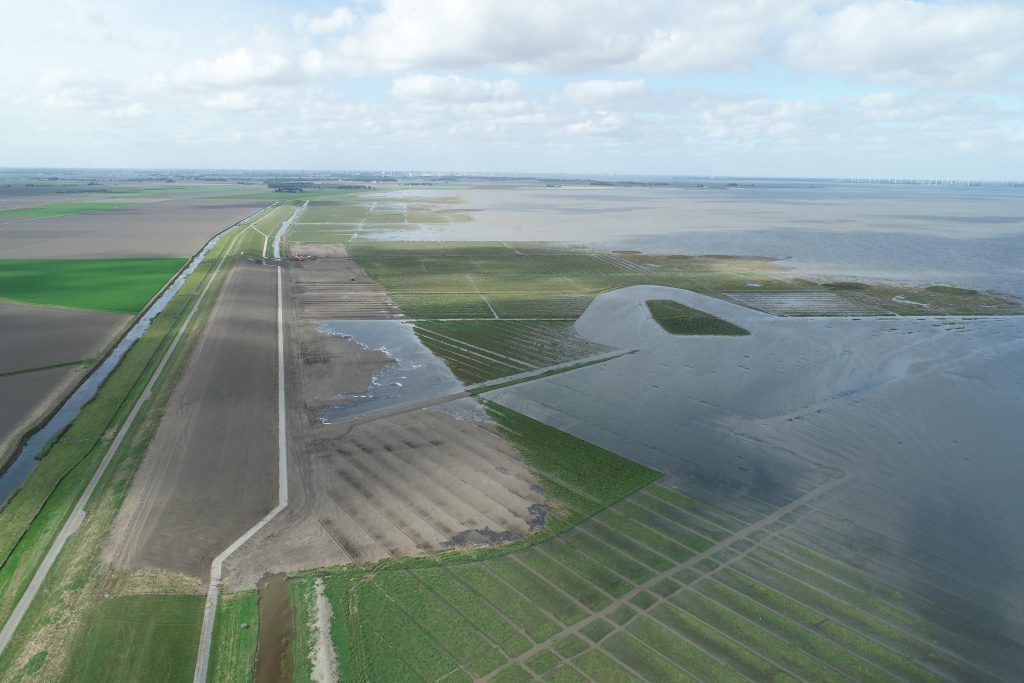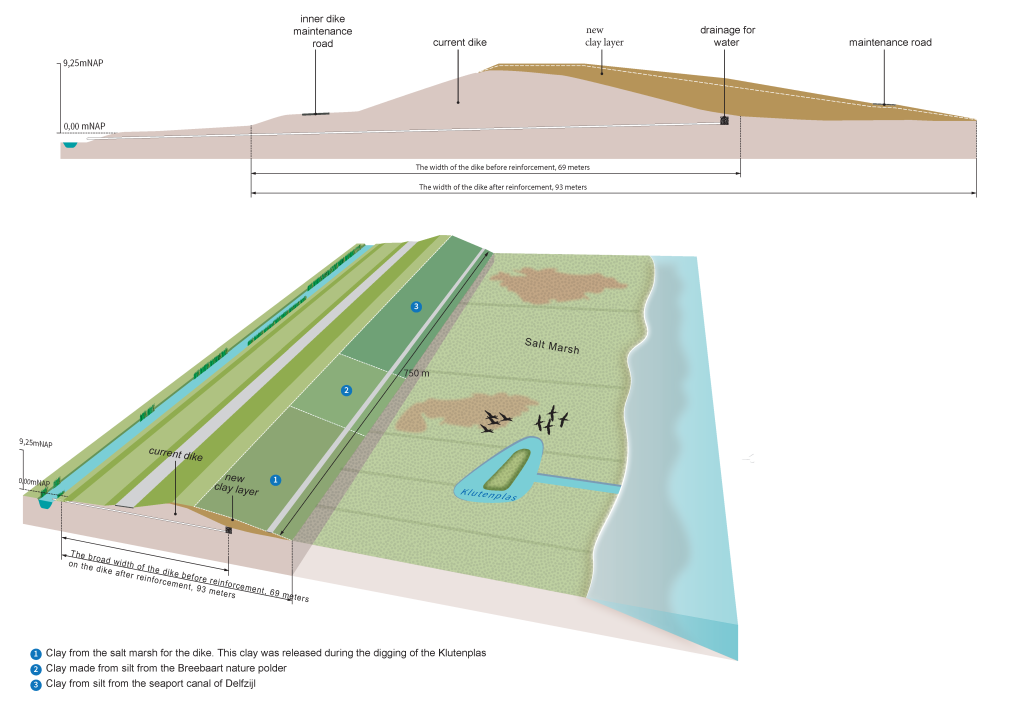In the far northeast of The Netherlands, near Groningen, a sea dike has been reinforced with ripened clay made from salty dredged sediment. That has never been done before. The sediment has matured into solid dike clay in three years, a process that takes many years in nature. The dike has been widened and raised with this special clay over a length of 750 meters. From 2025, the local water authority also wants to reinforce the remaining 11.75 kilometres of the sea dike along the Dollard estuary with this local clay.
The idea for this innovation arose 10 years ago. The Dutch Delta Program investigated new and sustainable forms of dike improvements that fit in well with the Wadden Sea World Heritage area. The National Delta Program offered the opportunity to explore the idea of the Wide Green Dike and the Clay Ripener. The latter was an idea of both EcoShape and the water authority of Hunze and Aa’s. The idea is simple: remove excess silt from the Ems-Dollard, let it dry into clay soil and use it to strengthen the adjacent dike. This improves the water quality because less sediment floats in the water, and a safe and green dike can be built that fits well into the environment.

Reinforcement of entire seawall
Project manager Erik Jolink: “This 750-metre Broad Green Dike is the final piece of research into the use of dredged sediment for dike reinforcement. We now know through extensive research how we can make clay from sludge in a short time and how strong this clay is. We want to use this knowledge to strengthen the rest of the 11.5 kilometres of the dike along the Dollard from 2025. The plan is to build clay ripeners right next to the sea dike, so that transport over long distances by trucks is not necessary.”
Smarter and more sustainable
Delta Commissioner Peter Glas: “The wide, green seawall is a good example of innovative Dutch hydraulic engineering. We will have to strengthen many dikes in the coming years. This project shows that it can be done smarter and more sustainably. It is a green dike that fits nicely in the Natura-2000 area. Because we reinforce the dike with clay from the neighbourhood, we avoid long transport distances; we reduce CO2 emissions from transport and at the same time, we improve the water quality because we use the sediment from the Ems Dollard. As a Delta Commissioner, it is also important for me that this sea dike can be easily adapted to a rising sea level. You don’t have to remove the asphalt first, apply sand and then resurface. You can just put extra clay on it.”
Globally significant
EcoShape Director, Henk Nieboer: “The significance of what we have done here is great. Globally, we are dealing with subsidence, rising sea levels and sand that is rapidly becoming scarce. We will move towards integrated sediment management (especially of fine sediment) to prevent the world’s valuable deltas from perishing from these stressors. Here in the north of our country, a small but important step has been taken on the way here.”
Knowledge
Meanwhile, extensive research has gained a lot of knowledge about the clay. The 750-metre dike will be monitored over the next 3 years to collect information about, among other things, the development of the herb-rich grass on the dike, drainage and the necessary management. The knowledge generated by this project can be used in other projects in The Netherlands and abroad.
Collaboration
Waterschap Hunze en Aa’s is the client. EcoShape has constructed the dike and is monitoring it. The Province of Groningen, Rijkswaterstaat, Het Groninger Landschap and Groningen Seaports are partners. The project is part of the Ems-Dollard 2050 program and the Delta Programme. The Wadden Fund and National Flood Protection Program are the financiers. In the National Flood Protection Programme, the water authorities and the central government are working together on the largest dike improvement operation since the Delta Works: 1,500 kilometres of dike will be reinforced over the next 30 years.

Interview with Technical Manager and Project Manager
Two key leaders in this project are Technical Manager, Marcel van den Heuvel and Project Manager, Jos van Uden. EcoShape sat down with them and interviewed them on their experience in this project.
